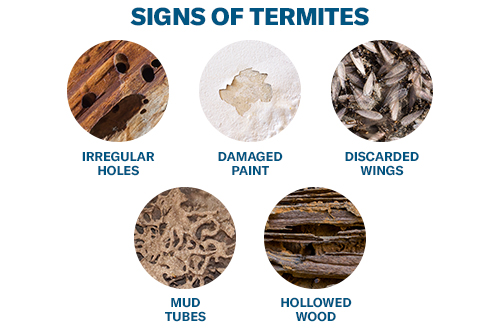Menu
Maintenance4 min
Should Homeowners in Northern Regions Worry About Termites?
Let’s be honest: “termites in cold weather” isn’t a common phrase. However, while termites have been historically associated with warmer weather, researchers at the Intergovernmental Panel on Climate Change predict the U.S. will see an annual average rise in temperature of 3 to more than 4 degrees Celsius over the next century. It’s believed this increase is allowing termites to better survive winters in more northern climates.
How Far North Do Termites Go?
In recent years, there have been reports of termite infestations in traditionally colder locations such as Wyoming, Montana and South Dakota. In fact, the only state where termites cannot survive is Alaska. It’s believed termites reach northern locations via infested soil and/or wood shipments from the south. Once they reach their new destination, termites are able to thrive and continue spreading if untreated.
How to Spot Termite Damage

Because termite damage is destructive and costly, it’s important to know how to spot. This includes:
- Irregular holes (e.g. giving natural wood a porous or “nibbled-on” appearance)
- Damaged paint
- Discarded wings
- Mud tubes
- Hollowed wood
How Engineered Wood Combats Termites
If you are considering buying or building a home in an area where termites traditionally haven’t been a concern, it could be time to get ahead of their spread by considering building materials engineered to resist termite decay.
One of the most important advantages of LP® SmartSide® Trim & Siding is its effectiveness to resist termite damage. During the proprietary LP® SmartGuard® process, these engineered wood products are treated to the core with zinc borate, which is proven to resist termites and fungal decay for decades. This treatment is applied to all LP SmartSide products, which are then factory primed to add another level of protection against moisture.
Termites After Rain
Speaking of moisture, homeowners are more likely to spot termites after periods of precipitation as these insects thrive in water-soaked environments. After rain, termites often increase their reproductive activities in order to expand their colonies.
To put LP SmartSide Trim & Siding to the test, we exposed samples to colonies of Formosan termites (the most aggressive termite specie) in the Hilo, Hawaii rainforest. After years of exposure, LP SmartSide products remained structurally sound in an environment with an average temperature of more than 70 degrees, high humidity and up to 170 inches of annual rainfall.
Interested in learning more about how LP SmartSide products stand up to cold, wet climates? Check out our blog on how engineered wood can combat potential damage caused by winter weather conditions.
Continue Reading
Business Solutions
5 minWhat's the Value of a Warranty?
Warranties are everywhere, from small consumer products to commercial machinery and everything in between. Sometimes it feels like you need a law degree to understand the terms of a warranty.
Continue ReadingMaintenance7 min
What Should Homeowners Prioritize in a Build?
Whether it's a new phone, clothes, or a family car, today we’re often resigned to the fact that the new things we own won’t last forever. However, there is one thing that we still expect to endure for the long haul, and that’s our homes.
Renovation8 min
How to Approach Your Siding Project Like a Pro
Re-siding your home can completely transform its look and increase curb appeal exponentially, but completing a re-side is a big job and a significant investment. If you’ve never done it, it’s hard to know what to expect and how to prepare for a siding replacement.
Trends7 min
Everything You Need to Know About Board & Batten Style Siding
Board and batten style siding is enjoying a resurgence as a way to create visual interest in an otherwise blank wall. Many believe board and batten style is a timeless look that can leave your home’s exterior with major curb appeal for years to come.